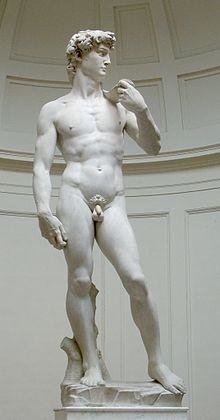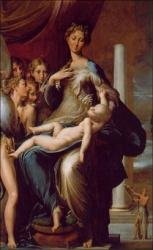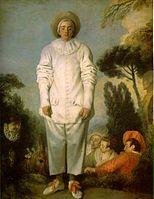Humans have used art for centuries as a medium for secure expression and communication. Through art, artists have been able to explore their imagination, expressing their cultural and historical understanding or simply how they view the world through their artistic eyes.
Their ideas have been captured in portraits, paintings, sculptures, buildings, ornamentals, furniture and many other forms of art and objects branded with art. These products follow a style depending on the period at which they were developed. Art styles have been changing every now and then.
Great museums such as Vatican Museum in Italy founded in 1503 and Louvre Museum opened in 1793 as a museum in Paris; have greatly contributed in the preservation of the art style cultures. Art styles evident in these museums include; Renaissance, Mannerism, Baroque and Rococo. Each style was unique. The following are examples of images of the above art styles and their characteristics.
Renaissance

Michelangelo (The Accademia Gallery, Florence), David
Renaissance art style was developed in Europe between 1400 and 1600. This style was named after the period of rebirth in Europe commonly known as renaissance. Art work made in this period had more emphasis on human nature than God and other spiritual beings. Oil paint was the medium used for painting. Bronze and marble human sculptures had a high level of anatomical precision.
During this period artists emerged as independent personalities comparable to poets and musicians who did their work with realist goals. Leonardo da Vinci was one of the great artists who spearheaded this revolution during renaissance.
Characteristics
The period was characterized by artists employing perspective in their work to deliver a more sensible presentation. Shortening lines in drawing created an illusion of depth. This is called foreshortening. Also to create an illusion of depth or three-dimensionality in a piece of work; a technique called sfumato, discovered by Leonardo da Vinci was employed.
Artists also used strong contrast between light and dark to give the illusion of depth or three- dimensionality. This style was referred to as chiaroscuro and was the opposite of sfumato. This period artists used balance and were proportionate in their work. They carefully considered the size of their materials.
Mannerism

Parmigianino’s, Madonna with the Long Neck.
Mannerism is an artistic style that was embraced by artists in the 16th century after renaissance. In this period artists were more interested in creating an interesting piece which expressed emotion with human figures in different poses and unrealistic settings.
Characteristics
This period is characterized by artists painting people in peculiar positions with exaggerated body parts such as the neck and limps creating a denial of harmony and balance in the piece of work. Unlike the renaissance style, mannerism used diagonal and out of line perspective.
Baroque
This period of art started around 1600. Artists concentrated on human perfection with strong lighting effects and distinction between lit areas and darkened areas.

Adoration, by Peter Paul Rubens
This period is characterized by use of dramatic lights and darks which made the picture look like there was a spotlight; adding some drama to the art. The source of light is well-known as tenebrism. The baroque art depicts reality and naturalism. This is evident in muscular structures made in that period e.g. “saint George and the dragon” by Rubens.
In sculptures, movement effects were applied such as a lot of twisting which lacked controlled posses. The artist of this period used time effect in their art. For instance an old man was incorporated in a piece of art to symbolize everybody will once get old. The artwork also had big facades. All these characteristics build up emotions and the intensity of the artwork.
Rococo

Antoine Watteau, Pierrot, 1718–1719
This style was developed in France in the 18th –century and spread to other parts of Europe.It is a word derived from French meaning small rocks and shells in an ornamental garden. It was associated with wealthy people; furniture and ornaments were quite costly.
Rococo was diverse and the artists themes were more creative. It made use of materials such as gold and creamy paste-like colors. It was therefore embraced in interior decorations and theatre. Every piece of art was taken to be elegant and pretty. Unlike other styles rococo almost had no religious theme.
Characteristics
This period of art is characterized by a lot of decoration and lightness appearance. Sculptures were irregular and curved. Subject matters are highly highlighted and a sense of motion was created by shifting of the art design e.g. from convex to concave and many openings that allowed the effect of light and shadow.
In conclusion, art is a mode of communication that is interesting and does not require a voice but puts many ideas together in a small space. Art styles have continued to change with time as more people venture into art. The difference in the styles creates one beautiful view and a diverse platform for artists to choose and specialize or exploit.